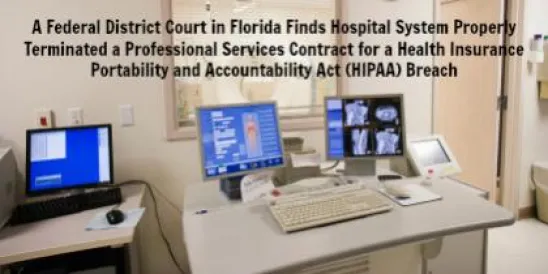As previously discussed, OSHA has been carefully scrutinizing the health care industry lately. And on June 25, 2015, OSHA officially introduced a new compliance nightmare for the inpatient health care and nursing home industries by announcing the details of the agency’s new health care enforcement initiative in a memorandum from Dorothy Dougherty, Deputy Assistant Secretary of Labor for Occupational Safety and Health, to OSHA Regional Administrators and State Plans. The memorandum is entitled “Inspection Guidance for Inpatient Healthcare Settings” (“guidance memo”).
The guidance memo requires both federal OSHA Regional Offices and State Plans to evaluate the number of work-related injuries and illnesses at inpatient health care and nursing home facilities in their areas and to target those facilities for inspections. Compliance officers are instructed to focus on five major hazards:
- Musculoskeletal disorders (“MSDs”) relating to patient or resident handling
- Workplace violence
- Bloodborne pathogens
- Tuberculosis
- Slips, trips, and falls
OSHA also reminded compliance officers that they can and should expand the scope of the inspection when additional hazards come to their attention during the inspection. These hazards include, but are not limited to, exposures to multi-drug resistant organisms, such as Methicillin-resistant Staphylococcus aureus (“MRSA”), and exposures to hazardous chemicals, such as sanitizers, disinfectants, anesthetic gases, and hazardous drugs.
Although there are no OSHA regulations applicable to several of these hazards, compliance officers are urged to rely upon the general duty clause, which enables OSHA to issue citations whenever it finds that an employer has failed to provide safe work and a safe work environment for its employees. In fact, the agency went so far as to include sample general duty clause citation language in the guidance memo that compliance officers may reference in issuing citations related to MRSA, MSDs, workplace violence, and other unregulated hazards that they may identify in the workplace.
It is critical to note that OSHA includes a broad range of inpatient facilities in the list of potential targets. Virtually any type of health care or nursing care facility that provides residential or inpatient services is at risk of an OSHA inspection—particularly if the employer has a high rate of work-related injuries and illnesses.
Employers operating inpatient care facilities should immediately take the following actions to prepare for inspections:
- Conduct an internal OSHA compliance audit with the assistance of outside counsel— this audit is protected from disclosure by the attorney-client privilege. Audit reports prepared without the aid of outside counsel can be subpoenaed by OSHA and used as a guide to potential violations at the worksite. Defending an OSHA citation can cost hundreds of thousands of dollars. An audit, by comparison, costs a tiny fraction of that amount and can help you identify and resolve gaps in your health and safety programs, dramatically decreasing the likelihood that a citation will be issued if OSHA targets your workplace. An added benefit of conducting an attorney-client privileged audit is the potential for a reduction in workers’ compensation claims. When an employer addresses the gaps identified in a health and safety audit, it also usually experiences an enormous drop in workers’ compensation costs.
- Read the guidance memo. This document identifies a host of other resources that compliance officers are to rely upon in conducting inspections of inpatient care facilities—all of which are publically accessible—essentially giving employers a road map of what compliance officers may identify as hazards in the workplace.
- Consult with counsel regarding preparation for an OSHA inspection. Counsel can equip you with a host of strategies before OSHA ever sets foot at your workplace that will enable you to minimize work disruption during an inspection and greatly reduce the possibility of receiving a citation.
- Watch Epstein Becker Green’s complimentary webinar entitled “Health Care in the Crosshairs: OSHA’s New Health Care Enforcement Initiative,” which provides substantial guidance on the health care enforcement initiative, how best to prepare for it, and the art of navigating an OSHA inspection.
Strategic planning is essential to successfully navigating any OSHA inspection, and inspections of inpatient care facilities are imminent. Employers operating inpatient care facilities are well advised to contact counsel as soon as possible so that they are ready to demonstrate their commitment to employee health and safety when OSHA comes knocking.



 />i
/>i

